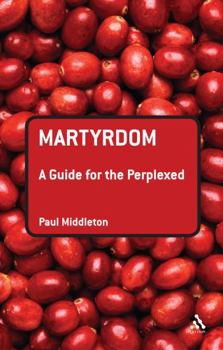Martyrdom: A Guide for the Perplexed
(Part of the Guides for the Perplexed Series)
Select Format
Select Condition 
Book Overview
Customer Reviews
Rated 5 starsOne of the two BGP bibles
If you are looking for a book describing all the things which need to be taken care of when planning and implementing BGP then you will appreciate this book.Mr Halabi provides a lot of example set-ups which are, for the people working in the Internet networking industry, very familiar. The examples range from a typical customer who wants BGP connectivity to multi-customer and international backbone configurations.Aside from...
0Report
Rated 5 starsExcellent book for BGP routing architectures
I am the architect of a leading MPLS VPN service which uses BGPv4 with MPLS extensions. I constantly refer back to this book for standard BGP scenarios (it has no MPLS VPN info). I have recommended this book to all our techincal support people and our customers for designing BGP peering networks.The book is well written, well organized and easy to follow. It has great breath of BGP applications. It is a tremendous help...
0Report
Rated 5 starsExcellent Internet Routing (BGP) Reference
Halabi's book is the BGP equivalent of Doyle's "Routing TCP/IP, Vol. 1". Without reading this book, I never would have understood BGP and the implications of interdomain routing. I also recommend Radia Perlman's "Interconnections, 2nd Ed."
0Report
Rated 5 starsI can now say that I understand BGP
The book was very easy to read for a networking literate individual. The book builds up to advanced topics and walks you through sample configurations. I now feel confident about my knowledge of BGP.
0Report
Rated 5 starsThey should've called this the 'Routing Bible'
This is, without a doubt, *the* definitive routing reference for the network engineer; and one of the best technical books I have ever read. I usually skip to the back and pick out the parts that interest me; I'm reading this from start to finish, it's that well written. If you need to integrate your LAN with the internet, or if you are a network consultant or ISP tech like me, you need this book. This is required reading.<P...
0Report




























